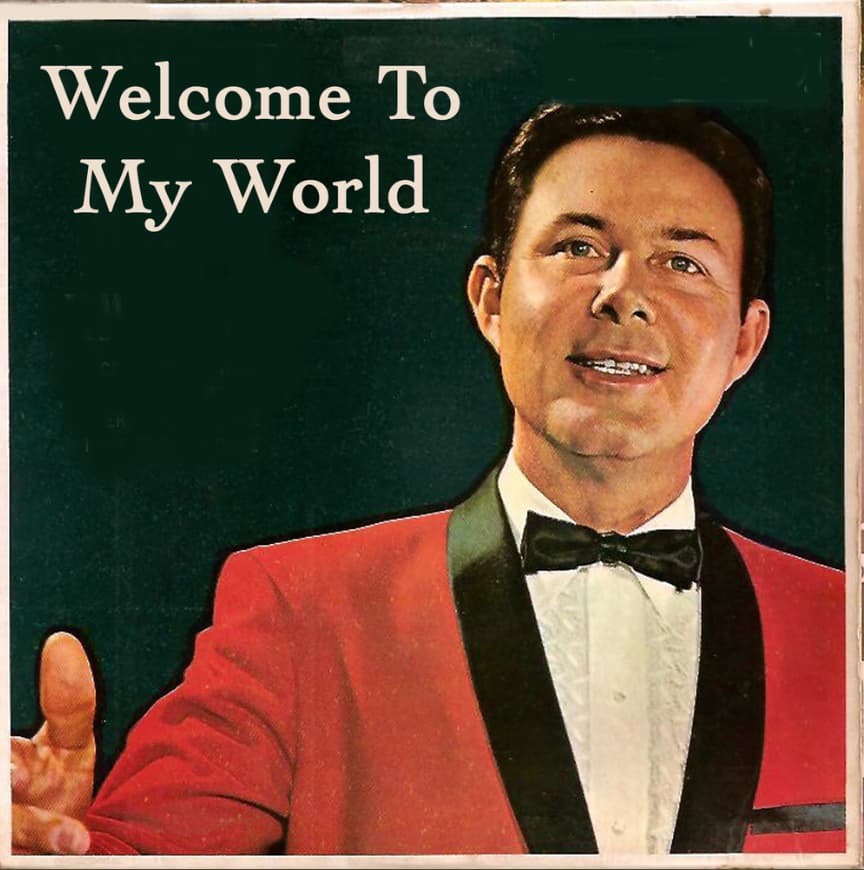
A gentle sanctuary of love offered with open arms
When Welcome to My World by Jim Reeves reached the airwaves in early 1964, it soared to No. 2 on the U.S. Billboard Hot Country Singles chart and in the United Kingdom had already peaked at No. 6 in July 1963. Included on the 1962 album A Touch of Velvet, the song stands today as one of Reeves’s most enduring contributions to the country-pop canon.
From the first gentle notes, the listener is invited into a world of quiet assurance and tender hospitality. Reeves’s voice—soft, velvety, deeply resonant—wraps itself around the simple but profound chorus: “Welcome to my world / Won’t you come on in?” The arrangement is elegantly sparse, the echoes of the burgeoning Nashville Sound evident in the warm strings, the subdued rhythm, and his intimate vocal delivery. In many ways, the song feels less like a performance and more like a sincere whisper to someone you’ve loved for years.
The story behind the song may not be steeped in dramatic incidents or widely documented turmoil, but its origins lie in the gentle craftsmanship of songwriters Ray Winkler and John Hathcock. Reeves adopted their composition and infused it with his signature style—what country historian Bill Malone referred to as a “caressing style” of vocalizing that fit the era’s move toward smoothness. The bridge of the song even draws upon biblical phrasing from Matthew 7:7-8—“Knock and the door will open / Seek and you will find…”—elevating the romantic invitation into something gently spiritual.
In its lyrical substance, “Welcome to My World” offers more than mere romantic overture. It is a homecoming of the heart, a voice saying: “I have built this space for you, I have cleared away the shadows, I have left the door unlocked.” Lines such as “Step into my heart / Leave your cares behind” summon the image of refuge, of love that is steadfast rather than fleeting. For many listeners, the comfort of this promise is what lingers long after the record has stopped spinning.
Musically, the recording exemplifies the seamless melding of country sensibility and pop polish. Reeves recorded the track under the RCA Victor label, with production that embraced subtle strings and background harmonies while retaining his baritone voice as the centrepiece. At a time when country music was seeking wider appeal, he became one of its most successful ambassadors—his sound crossing boundaries of genre and geography. Indeed, the song’s chart success in the UK and elsewhere testifies to its universal resonance: in Britain it was among the top-selling singles of 1963, reaching No. 60 on the year’s list.
There is poignancy tied to this song’s timing. As one of Reeves’s final major hits during his lifetime—he died tragically in a plane crash on July 31, 1964—“Welcome to My World” carries the weight of farewell even as it opens the door. In this context, the invitation becomes richer: more than an embrace, it is an enduring echo of voice and intent.
For listeners of mature years who have lived through changing decades, through the fade of vinyl and the rise of CDs and downloads, this song offers a moment of stillness. Put on a good record player, close your eyes, and the world of Jim Reeves unfolds: a world of tender longing, warm lights, and a voice that invites you inside. The lines become familiar as a well-worn quilt: comforting, soft, and always there.
In the end, “Welcome to My World” stands as a testament to the power of simplicity in music—the assurance of belonging, the quiet promise of space set aside for love, and the voice that says, without ceremony: “I’m here.” And for as long as we listen, that world remains open.